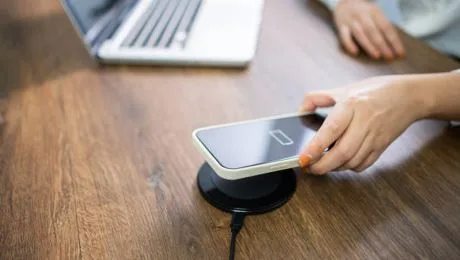Why eSIM Technology Is Revolutionizing Travel Connectivity Across Southeast Asia and Japan
Travel has evolved dramatically over the past decade, and one of the most significant technological shifts has been in how we stay connected while exploring new destinations. Gone are the days when travelers had to hunt down local SIM cards at airports, deal with language barriers at phone shops, or pay exorbitant roaming charges to their home carriers. The emergence of eSIM technology has fundamentally changed the game, offering seamless connectivity that can be activated before you even board your plane.
For travelers heading to popular destinations like the Philippines, Indonesia, and Japan, understanding how to leverage eSIM technology can mean the difference between a stress-free journey and constant connectivity headaches. The Philippines eSIM deals available today offer unprecedented convenience and value, allowing visitors to stay connected from the moment they land in Manila, Cebu, or any of the country’s 7,641 islands. But what makes eSIM so special, and why should it be on every modern traveler’s radar?
What Makes eSIM Different From Traditional SIM Cards
Traditional SIM cards have served us well for decades, but they come with inherent limitations that become painfully obvious when traveling. Physical SIM cards require you to locate a store, wait in line, potentially struggle with communication barriers, and then fumble with tiny cards and ejector pins while trying not to lose your original SIM. For travelers visiting multiple countries, this process multiplies, and managing multiple physical cards becomes a juggling act.
eSIM, or embedded SIM, is built directly into your device’s hardware. Instead of inserting a physical card, you simply scan a QR code or download a profile, and within minutes you’re connected to a local network. This digital approach eliminates the physical limitations entirely. Your phone can store multiple eSIM profiles simultaneously, meaning you can switch between your home carrier and travel plans without any physical swapping.
The technology works through a small chip embedded in your smartphone, tablet, or smartwatch. This chip can be programmed remotely to connect to different carriers and plans. When you purchase an eSIM plan, you receive activation details (usually via email) that allow you to download the carrier profile. Once activated, your device connects to local networks just as it would with a traditional SIM card, but the entire setup process happens digitally.
Why Southeast Asia Is Perfect For eSIM Adoption
Southeast Asia has become one of the hottest regions for eSIM adoption, and there are compelling reasons why. The region’s tourism infrastructure has rapidly modernized, with countries recognizing that connected travelers are happier travelers who spend more and navigate more efficiently. Indonesia, with its sprawling archipelago of over 17,000 islands, presents unique connectivity challenges that eSIM solutions address brilliantly.
For visitors exploring Bali’s beaches, Jakarta’s urban landscape, or the cultural richness of Yogyakarta, eSIM Indonesia options provide reliable coverage without the hassle of finding physical retailers in remote locations. The convenience factor becomes even more critical when you consider that many of Southeast Asia’s most beautiful destinations are off the beaten path, where finding a functioning SIM card vendor might require significant time and effort.
The Philippines presents similar advantages. As an island nation with tourism spread across multiple regions—from the beaches of Palawan to the rice terraces of Banaue—having connectivity that activates instantly upon arrival is invaluable. Whether you’re island hopping, booking rides through local apps, or staying in touch with hotels and tour operators, maintaining consistent connectivity enhances every aspect of the travel experience.
Both countries have invested heavily in their telecommunications infrastructure, with 4G LTE coverage expanding rapidly even to more remote areas. This infrastructure development pairs perfectly with eSIM technology, as travelers can tap into these improved networks without needing to navigate local carrier stores or deal with prepaid top-up systems that vary by provider.
Japan’s Advanced eSIM Ecosystem
While Southeast Asia is rapidly embracing eSIM technology, Japan has long been at the forefront of telecommunications innovation. The country’s approach to mobile connectivity reflects its broader technological sophistication, and this extends to robust eSIM support across major carriers. For international visitors, this translates into exceptional connectivity options that make exploring Japan’s unique blend of ancient tradition and cutting-edge modernity even more seamless.
Japan’s rail system, one of the world’s most efficient, relies heavily on real-time digital information. Having reliable internet access means you can check train schedules, navigate complex station layouts, access digital rail passes, and even translate signage on the fly. Japan eSIM solutions provide the consistent, high-speed connectivity needed to fully leverage these digital tools while exploring cities like Tokyo, Kyoto, Osaka, and beyond.
The country’s tourism infrastructure has evolved to assume that visitors will be connected. From restaurant reservations through apps to accessing digital museum guides, from using QR code payments at convenience stores to navigating Google Maps through labyrinthine neighborhoods—staying connected isn’t just convenient in Japan, it’s practically essential for maximizing your experience.
Japanese carriers offer extensive 4G and increasingly 5G coverage, even in rural areas and mountain regions. This means whether you’re skiing in Hokkaido, exploring temples in Nara, or hiking in the Japanese Alps, your eSIM-powered connection keeps you informed and safe. The reliability of Japanese telecommunications networks means dropped connections and dead zones are rare, even on bullet trains traveling at 320 km/h.
Cost Comparison: eSIM Versus Traditional Roaming
One of the most compelling arguments for eSIM adoption is economic. International roaming charges from home carriers can be shockingly expensive, often ranging from $10-15 per day for limited data. A two-week trip could easily cost $150-200 just for basic connectivity, and that’s before considering the frustration of slower speeds and data caps.
Traditional local SIM cards offer better value than roaming, but they come with their own costs beyond the purchase price. There’s the time spent finding a vendor, the language barrier complications, the risk of scams targeting tourists, and the hassle of dealing with physical cards. You might spend an hour or more of valuable vacation time just getting connected.
eSIM plans typically offer superior value propositions. Prices vary by destination and data allowance, but travelers can often find comprehensive plans covering a week or more for $15-30. These plans frequently include generous data allowances (often 5GB-20GB or more), adequate for navigation, messaging, social media, and even video calls. The activation process takes minutes rather than hours, and you can complete it from your home or hotel room.
The transparency of eSIM pricing is another advantage. You know exactly what you’re paying upfront, with no surprises, hidden fees, or confusing top-up requirements. Many providers offer flexible plans—you can purchase exactly the amount of data you need for your trip duration, whether that’s three days or three weeks.
Device Compatibility And Technical Requirements
Before diving into eSIM adoption, travelers need to verify their devices support the technology. The good news is that most smartphones released after 2018 include eSIM capability, though it’s always worth confirming. iPhones from the XS/XR generation onward support eSIM, as do most modern Android flagships from Samsung, Google Pixel devices, and many others.
Checking your device’s compatibility is straightforward. For iPhones, navigate to Settings > Cellular > Add Cellular Plan. If you see this option, your device supports eSIM. For Android devices, the path varies slightly by manufacturer, but generally you’ll find it under Settings > Connections > SIM card manager or a similar menu structure.
It’s important to note that some carrier-locked phones may have eSIM functionality disabled. Phones purchased through payment plans or subsidized by carriers might have restrictions. Checking with your home carrier about unlocking policies before traveling is wise. Most carriers will unlock devices that are fully paid off or after a specific period of active service.
Tablets and smartwatches are increasingly eSIM-capable as well. The iPad Pro, iPad Air, and cellular versions of the Apple Watch support eSIM, as do cellular-enabled Android tablets and Wear OS watches. This means you can maintain connectivity across your entire device ecosystem while traveling, not just on your primary smartphone.
Activation Process: What To Expect
The eSIM activation process is remarkably straightforward, though it varies slightly between providers. The general workflow follows these steps: purchase your plan through a provider’s website or app, receive activation instructions via email (typically within minutes), and then scan the provided QR code or manually enter the activation details into your device.
When you receive your eSIM QR code, ensure you’re connected to WiFi before beginning the activation process, as downloading the carrier profile requires internet connectivity. Open your phone’s settings, navigate to the cellular or mobile data section, and select “Add Cellular Plan” or the equivalent option. Your phone’s camera will activate—simply scan the QR code provided in your email.
After scanning, your device will download the carrier profile and may prompt you to label the plan (useful if you’re managing multiple eSIM profiles). You’ll typically need to select which plan to use for cellular data and whether to keep your primary number active for calls and texts. Many travelers set their home number for calls/texts only while using the eSIM for data, avoiding roaming charges while maintaining accessibility.
The entire process, from purchase to connectivity, usually takes 5-10 minutes. Most eSIM plans activate automatically when you arrive in your destination country and your phone connects to the local network. Some providers allow you to choose a specific activation date, letting you purchase in advance without starting the clock on your data allowance until you actually need it.
Network Quality And Coverage Considerations
Not all eSIM providers offer identical network access, even within the same country. Understanding how eSIM providers partner with local carriers helps you choose the best option for your specific travel plans. In countries like the Philippines, Indonesia, and Japan, multiple carriers operate with varying coverage footprints.
Premium eSIM providers typically partner with the leading carriers in each country, ensuring access to the most extensive and reliable networks. In the Philippines, this might mean connection to Smart or Globe networks. In Indonesia, partnerships with Telkomsel or XL Axiata provide the broadest coverage. In Japan, major carriers like NTT Docomo, AU, or Softbank offer the most comprehensive network access.
Reading reviews and checking provider specifications helps ensure you’re getting access to quality networks. Some budget eSIM options may partner with smaller carriers or offer lower-priority network access, which can result in slower speeds during peak usage times. For travelers who need reliable connectivity for navigation, business purposes, or staying connected with family, investing in a reputable provider with premium network partnerships is worthwhile.
Coverage maps are valuable resources when planning your travels. If you’re venturing to remote areas—perhaps island hopping in the Philippines, exploring rural Indonesia, or hiking in Japan’s countryside—verifying that your chosen eSIM provider’s partner network covers those regions ensures you won’t be left without connectivity when you need it most.
Managing Multiple eSIM Profiles For Multi-Country Trips
One of eSIM technology’s most powerful features is the ability to store and manage multiple profiles on a single device. For travelers embarking on multi-country adventures through Southeast Asia, this capability eliminates the need for multiple physical SIM cards and the confusion that comes with managing them.
Modern smartphones can store numerous eSIM profiles simultaneously—iPhones support storing multiple profiles with two active at once (one eSIM and one physical SIM, or two eSIMs on iPhone 13 and newer). This means you can download eSIM profiles for each country you plan to visit before leaving home, then simply switch between them as you cross borders.
The switching process is seamless. In your phone’s settings, you can designate which eSIM to use for cellular data with just a few taps. As you travel from the Philippines to Indonesia, then onward to Japan, you simply change your active data plan to the appropriate country profile. Your home number can remain active for calls and texts (if you choose), while the local eSIM handles data.
This multi-profile management also offers flexibility if your travel plans change. Perhaps you originally allocated five days for the Philippines but decided to extend your stay by three days. You can easily purchase additional data for your Philippines eSIM without needing to track down a physical store or deal with top-up vouchers. The digital nature of eSIM means adding data or extending validity is just as easy as the initial purchase—often completed through an app or website in minutes.
Security And Privacy Advantages
Beyond convenience and cost savings, eSIM technology offers meaningful security and privacy benefits for travelers. Physical SIM cards can be lost, stolen, or damaged, potentially leaving you without connectivity at critical moments. Even worse, in some destinations, SIM card fraud exists, where unscrupulous vendors sell cards that stop working after a few days or that have hidden charges.
eSIM eliminates these physical security risks entirely. There’s nothing to lose, steal, or damage. If your phone is stolen, you can remote-wipe it without worrying about a thief accessing a physical SIM that might contain personal information or account access. The digital nature of eSIM means all credential management happens through encrypted channels, reducing fraud opportunities.
Privacy-conscious travelers also appreciate that eSIM can offer more control over personal information. When purchasing physical SIM cards in foreign countries, you often must provide identification documents and personal details that are stored by local carriers. The data handling practices and regulations vary significantly by country. Reputable eSIM providers typically operate under stricter privacy regulations (often European GDPR standards), providing more robust protection for your personal information.
Additionally, using separate eSIM profiles for travel versus home use creates a logical separation of your digital activities. Your home carrier doesn’t see your travel data usage patterns, and local carriers don’t have access to your primary phone number or regular usage data. For business travelers or those concerned about data privacy, this separation offers meaningful peace of mind.
Environmental And Practical Sustainability
An often-overlooked advantage of eSIM technology is its environmental impact—or rather, its reduced environmental impact compared to physical SIM cards. Every year, mobile carriers worldwide produce billions of plastic SIM cards, along with the packaging, ejector pins, and starter kit materials that accompany them. Most of this plastic ultimately ends up in landfills.
For frequent travelers, the accumulation of old SIM cards represents not just clutter but unnecessary waste. How many of us have drawers filled with SIM cards from past trips, kept “just in case” but never used again? eSIM eliminates this waste stream entirely. There’s no plastic production, no packaging, no shipping of physical materials to retailers around the world.
The digital delivery model also reduces the carbon footprint associated with distribution. No trucks delivering SIM card inventory to stores, no retail space required for inventory storage, no return logistics for expired stock. While the environmental impact of any single SIM card is small, at the scale of global mobile connectivity, the cumulative effect is significant.
From a practical sustainability perspective, eSIM also reduces the electronic waste associated with SIM card trays and slots in devices. As smartphones evolve toward eSIM-only designs (as we’ve already seen with some iPhone 14 and iPhone 15 models in certain markets), manufacturers can create devices with improved water resistance, larger batteries in the space freed up, or simply more elegant industrial designs without the compromises required by physical SIM slots.
Future-Proofing Your Travel Connectivity
The telecommunications industry is clearly moving toward an eSIM-future. Major carriers worldwide are investing in eSIM infrastructure, device manufacturers are expanding eSIM support across more models, and regulatory frameworks are evolving to support digital SIM technology. For travelers, this trajectory means that becoming comfortable with eSIM now prepares you for what will soon be the standard approach to mobile connectivity.
The next generation of travel connectivity will likely include even more sophisticated eSIM applications. Imagine automated carrier switching based on signal strength and price, seamless roaming across entire regions with single eSIM profiles, or AI-optimized data management that learns your usage patterns and automatically purchases optimal plans. These innovations are all built on the foundation of eSIM technology.
Device evolution will continue to favor eSIM as well. We’re already seeing smartphones launched without physical SIM slots in some markets, and this trend will accelerate. Smartwatches with cellular connectivity, tablets, laptops with built-in cellular—all of these increasingly rely on eSIM rather than physical cards. Early adoption of eSIM means you’re already comfortable with the technology as it becomes ubiquitous.
For frequent travelers, the investment in eSIM-compatible devices and the learning curve associated with digital SIM management pays dividends across every future trip. Once you’ve activated your first eSIM and experienced the convenience, reverting to hunting down SIM card vendors at airports feels archaic. The time savings alone across multiple trips quickly outweigh any initial unfamiliarity with the technology.
Frequently Asked Questions
Can I use eSIM if my phone is locked to a carrier?
Carrier-locked phones may have eSIM functionality disabled or restricted. Contact your home carrier to inquire about unlocking policies. Most carriers will unlock devices that are fully paid off or after completing your contract term. Once unlocked, your device’s eSIM capability should function normally.
What happens to my home phone number when I activate a travel eSIM?
Your home number remains active if you’re using a dual-SIM setup. Modern smartphones let you designate your eSIM for data while keeping your primary number active for calls and texts. This allows you to receive important calls without incurring roaming charges, while using local data rates for internet connectivity.
How much data do I really need for a typical vacation?
Data needs vary based on usage patterns, but most travelers find 1-2GB per day sufficient. Navigation uses about 5-10MB per hour, social media browsing consumes 50-100MB per hour, and streaming music requires 50-70MB per hour. Video calls use more (about 300-500MB per hour). For a week-long trip with moderate usage, 7-10GB typically provides comfortable headroom.
Can I top up or extend my eSIM plan if I run out of data?
Most eSIM providers offer top-up options through their apps or websites. You can typically add more data to your existing plan or extend the validity period. This flexibility allows you to purchase exactly what you need without over-committing to large plans upfront or being stranded without connectivity if your usage exceeds expectations.
Are eSIMs compatible with my smartwatch or tablet?
Many modern smartwatches and tablets support eSIM, but compatibility varies by model. Cellular versions of the Apple Watch Series 3 and newer support eSIM, as do cellular-enabled iPads. Android tablets and Wear OS watches from major manufacturers increasingly include eSIM support. Check your device specifications or settings to confirm eSIM capability before purchasing a travel plan.
What happens if I accidentally delete my eSIM profile?
Most eSIM providers allow you to re-download your profile if accidentally deleted, though policies vary by provider. Some send reactivation instructions if you contact support, while others include this in their app functionality. It’s wise to screenshot or save your QR code and activation details in a secure location (like a password manager) as backup before deleting your original email.
Can I share my eSIM data connection with other devices?
Yes, you can enable personal hotspot functionality on your eSIM-connected device just as you would with a physical SIM. This allows you to share your data connection with laptops, tablets, or other travelers’ devices. Keep in mind that hotspot usage typically consumes data more quickly, so monitor your remaining allowance when sharing connectivity with multiple devices.







